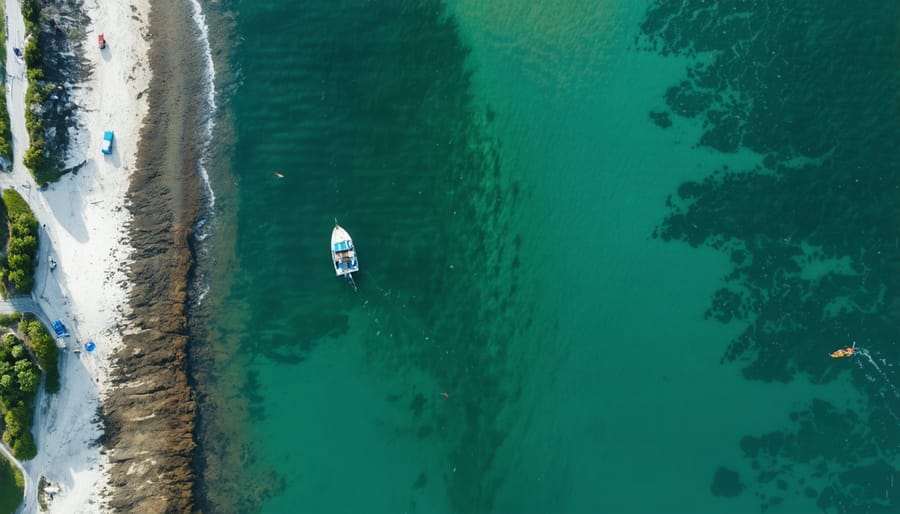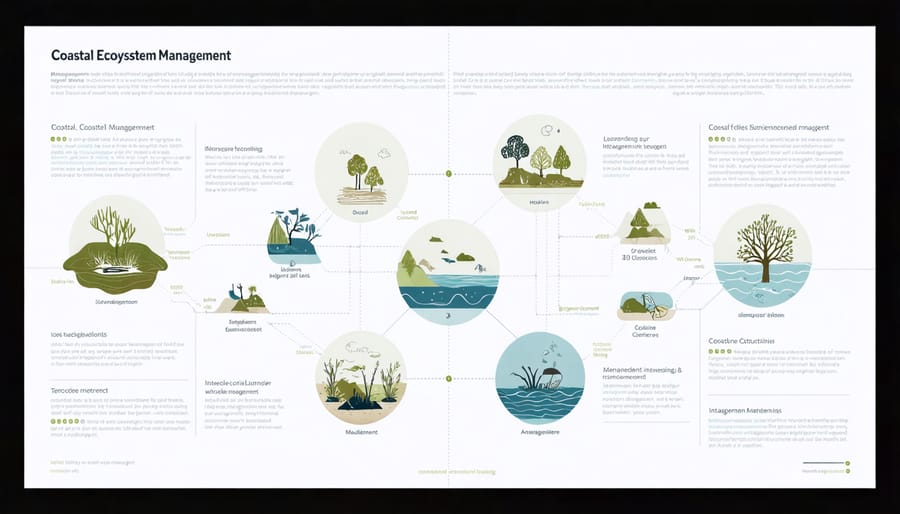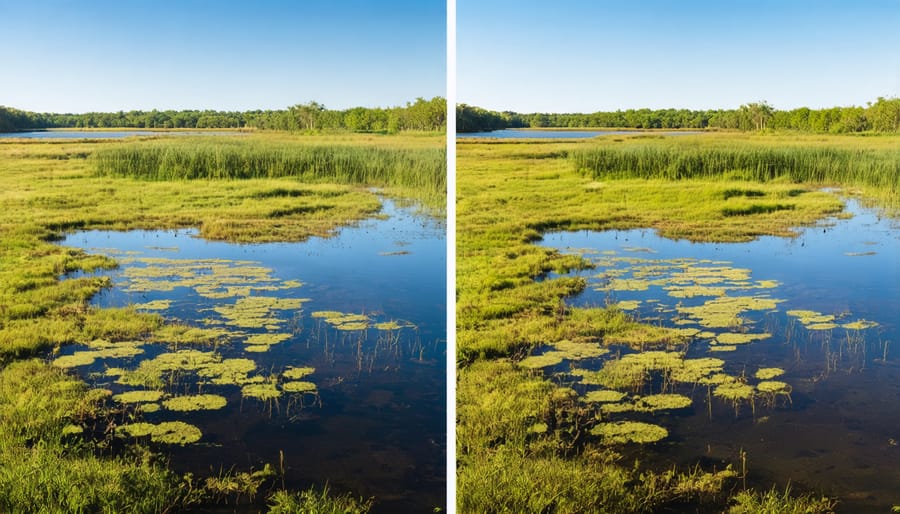How Integrated Coastal Management Is Revolutionizing Marine Conservation

What is Integrated Coastal Management?

Key Components of ICM
Effective integrated coastal management (ICM) relies on several interconnected components that work together to ensure sustainable coastal development and protection. At its core, comprehensive planning serves as the foundation, involving detailed assessments of coastal resources, environmental impacts, and socio-economic factors. These assessments inform coastal management policies and guide decision-making processes.
Stakeholder engagement stands as another crucial element, bringing together local communities, government agencies, environmental organizations, and industry representatives. This collaborative approach ensures that diverse perspectives are considered and helps build consensus around management decisions. Regular communication channels and participatory workshops facilitate meaningful dialogue among these groups.
Coordination mechanisms form the operational backbone of ICM, establishing clear roles and responsibilities among different agencies and stakeholders. This includes creating formal partnerships, developing shared monitoring systems, and implementing joint enforcement protocols. Scientific monitoring and evaluation provide the necessary data to track progress and adapt strategies as needed.
Technology integration and data management systems support evidence-based decision-making, while capacity building ensures that stakeholders have the necessary skills and knowledge to participate effectively. Public awareness and education programs help foster community support and understanding of coastal conservation efforts, making ICM more sustainable in the long term.
Goals and Objectives
Integrated Coastal Management (ICM) aims to establish a balanced and sustainable approach to coastal resource utilization while ensuring environmental protection and socio-economic development. The primary goal is to coordinate various stakeholder activities within coastal zones to minimize conflicts and optimize resource use. This includes preserving marine biodiversity, protecting critical habitats, and maintaining ecosystem services while supporting local communities and industries.
Key objectives include developing sustainable fishing practices, reducing coastal pollution, protecting endangered marine species, and building resilient coastal communities. ICM also focuses on adapting to climate change impacts, such as sea-level rise and extreme weather events, through comprehensive planning and risk management strategies.
Another crucial objective is fostering collaboration between different government levels, local communities, and private sectors to create unified coastal management policies. This collaborative approach ensures that conservation efforts align with economic development needs while maintaining cultural heritage and traditional practices.
Success in ICM is measured through improved water quality, increased marine biodiversity, enhanced coastal resilience, and strengthened local economies, ultimately creating a harmonious relationship between human activities and coastal ecosystems.
The Science Behind ICM
Ecosystem-Based Approach
The ecosystem-based approach is fundamental to integrated coastal management, recognizing that coastal areas function as interconnected systems rather than isolated elements. This approach considers the complex relationships between marine life, habitat conditions, and human activities, ensuring that management decisions account for the entire ecosystem’s health.
By incorporating ecological principles, ICM helps maintain biodiversity while supporting sustainable resource use. Managers consider factors like species migration patterns, breeding grounds, and habitat connectivity when developing conservation strategies. This holistic perspective enables better protection of critical ecosystems such as mangroves, seagrass beds, and coral reefs, which serve as natural buffers against coastal erosion and provide essential habitat for marine species.
The approach also emphasizes the importance of adaptive management, allowing strategies to evolve based on ecosystem monitoring and scientific research. This flexibility helps coastal managers respond effectively to environmental changes, whether they’re natural fluctuations or human-induced impacts. By prioritizing ecosystem health alongside human needs, ICM creates a balanced framework that supports both environmental conservation and sustainable coastal development.

Environmental Assessment Tools
Environmental assessment tools play a crucial role in monitoring and evaluating coastal management efforts. These tools combine scientific data collection methods with modern technology to provide comprehensive insights into ecosystem health and management effectiveness. Common assessment techniques include satellite imagery analysis, water quality monitoring, biodiversity surveys, and socio-economic impact studies.
Field researchers regularly employ geographic information systems (GIS) to map coastal changes and track habitat modifications over time. Water quality measurements focus on parameters such as salinity, temperature, pH levels, and dissolved oxygen content, providing vital information about marine ecosystem health. Regular biodiversity assessments help track species populations and identify potential threats to marine life.
Coastal managers also utilize participatory monitoring programs, where local communities and stakeholders contribute to data collection efforts. These citizen science initiatives not only provide valuable data but also foster community engagement and environmental awareness. Economic analysis tools help evaluate the financial impacts of management decisions on local industries and communities.
Modern environmental assessment increasingly incorporates remote sensing technology and artificial intelligence to process large datasets efficiently, enabling more accurate predictions and better-informed management decisions.

Real-World Success Stories
The Philippines’ Batangas Bay exemplifies one of the most inspiring successful restoration efforts in integrated coastal management. Through collaborative efforts between local communities, government agencies, and environmental organizations, the bay transformed from an over-exploited fishing ground into a thriving marine ecosystem. The implementation of sustainable fishing practices and mangrove restoration led to a 40% increase in fish populations within five years.
In Australia’s Great Barrier Reef Marine Park, ICM strategies have effectively balanced tourism demands with conservation needs. By establishing zones for different activities and implementing strict visitor guidelines, the park has maintained its ecological integrity while generating substantial tourism revenue. Local indigenous communities actively participate in management decisions, incorporating traditional knowledge into conservation practices.
The Netherlands offers another remarkable example through its “Building with Nature” approach. Rather than fighting against natural coastal processes, Dutch engineers work with them, creating innovative solutions like the Sand Motor project. This artificial peninsula, designed to distribute sand naturally along the coast, has successfully protected shorelines while creating new habitats for coastal species.
These success stories demonstrate how integrated coastal management can effectively balance human needs with environmental protection, creating sustainable solutions that benefit both communities and ecosystems.
Integrated Coastal Management represents a vital framework for protecting our marine ecosystems while supporting sustainable development. By bringing together diverse stakeholders, from local communities to government agencies, ICM creates a balanced approach that considers both environmental preservation and human needs. The success stories from coastal regions worldwide demonstrate that when properly implemented, ICM can effectively address challenges like habitat degradation, resource depletion, and climate change impacts. As our coastal areas face increasing pressures from population growth and development, the importance of ICM cannot be overstated. Through collaborative decision-making, scientific monitoring, and adaptive management strategies, ICM offers a promising path forward for marine conservation. By embracing this holistic approach, we can ensure the long-term health of our coastal ecosystems while maintaining their vital economic and social benefits for future generations.
